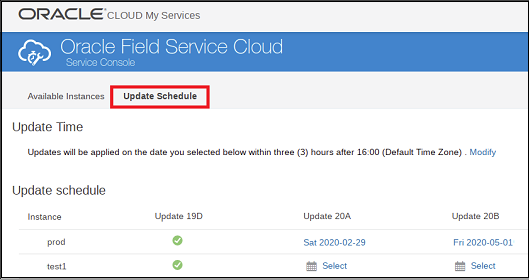Due to their seamless ability to manage operations, Oracle Cloud apps are widely used by enterprises across different industry verticals. As Oracle Cloud apps are based on the notion of continuous innovation, hundreds of new features and functionalities are rolled out every quarter, to help customers to efficiently and effectively manage their businesses.Although these updates offer agility and responsiveness to enterprises, they are no less than a nightmare to Oracle Cloud application managers. In this article, we’ll discuss why updates cannot be rolled out in production without testing and what you should do to manage them.
What is an update?
Oracle Cloud quarterly updates consist of new features, customer enhancement requests, and bug fix from previous releases.In the form of quarterly updates, Oracle rolls out new features that can help customers to manage their business more efficiently.
Why panic about Oracle Cloud quarterly updates?
Oracle’s updates have the potential to affect existing business processes, key integrations, and critical security roles.So, it is mandatory for the Oracle Cloud application managers to understand the impact of the upcoming updates on their current business processes.
Don’t Panic! Just Execute Regression Tests!
Before applying Oracle quarterly updates to the production environment, you are advised to test your critical workflow, key integrations, security roles, and critical reports. This will help you prevent defect leakage into products.
However, testing Oracle Cloud apps manually can be excruciating. The reason for this is the frequency of Oracle updates and short testing window.
- Quarterly updates testing means you need to perform regression testing at least 4 times/year. Manually doing this can be a very costly and time consuming process. Furthermore, inadequate test coverage due to human factors can cost you clients, revenue, and reputation.
- The updates are first rolled out in the test environment and two weeks later in the production environment. So, Oracle customers get two weeks to test their critical business processes.
Enterprises that want to manually test Oracle Cloud apps need to understand that they will always struggle to keep pace with the frequency and depth of Oracle updates. Apart from this, inadequate coverage might expose your business to serious risks. In case of manual testing, testers often moved either by guesses or previous industry experience. In such a situation, critical impacted areas might not come under test coverage, leading to disruption post update.
If not manual testing, then what?
You need to bring in Oracle test automation. Automated Oracle testing will not only accelerate testing cycles but also ensures adequate test coverage to keep business risks at bay. Automation eliminates manual efforts and replaces repetitive steps that are used in regression testing. This significantly increases the speed of test execution and makes the testing process accurate to deliver high return on investment and quality products.
- Automation ensures risk-based test coverage of impacted areas during Oracle updates.
- Scripts can be executed in parallel, thus optimizing efficiency.
- Pre-built test scripts eliminates the need of creating scripts from scratch, saving a huge sum of time and money.
- Automated scripts are more resilient to changes and require minimum efforts to maintain.
- Mitigate risks as testers need to execute testing for impact areas only. There is no chance of over testing or under testing.
- Oracle Update Certification can be achieved within days and not in weeks.
- Business users can devote their small amount of time in testing and can focus on other critical tasks.

